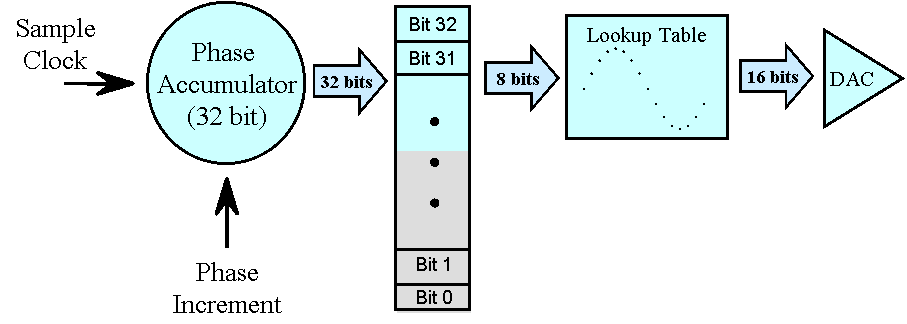
Download: project files


The conversion of frequency to phase increment requires the multiplicative constant:
Actual frequencies will be very slightly smaller than the desired frequency. For example, a desired frequency of 15 kHz measured 14999.85 kHz, compared to a predicted value of 14999.995
//set up DDS frequency
//Use switches to set freq
wire [31:0] dds_incr;
wire [31:0] freq = SW[3:0]+10*SW[7:4]+100*SW[11:8]+1000*SW[15:12]+10000*SW[17:16];
assign dds_incr = freq * 91626 ; //91626 = 2^32/46875 so SW is in Hz
reg [31:0] dds_phase;
always @(negedge AUD_DACLRCK or negedge DLY_RST)
if (!DLY_RST) dds_phase <= 0;
else dds_phase <= dds_phase + dds_incr;
wire [7:0] index = dds_phase[31:24];
sine_table sig1(
.index(index),
.signal(audio_outR)
);
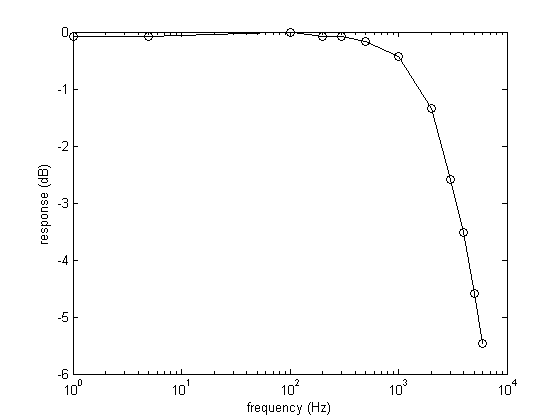
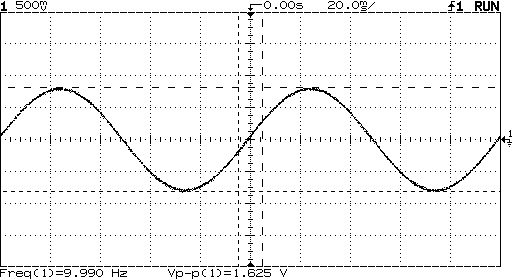
10 Hz
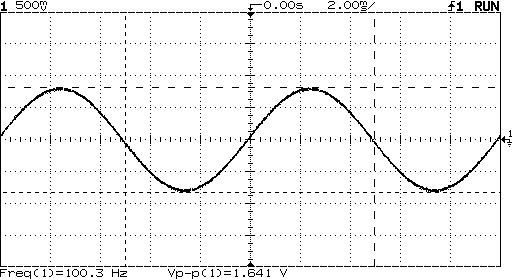
100 Hz
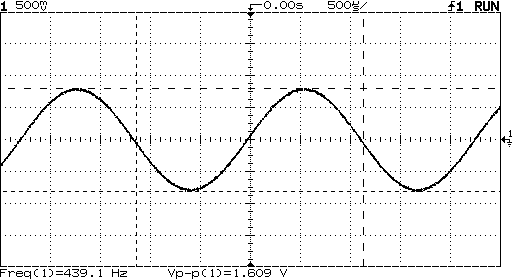
440 Hz

15 kHz
Verilog source and Quartus reports
National Instruments, Understanding Direct Digital Synthesis (DDS), (pdf)
Maintained by John Loomis, last updated 11 March 2008